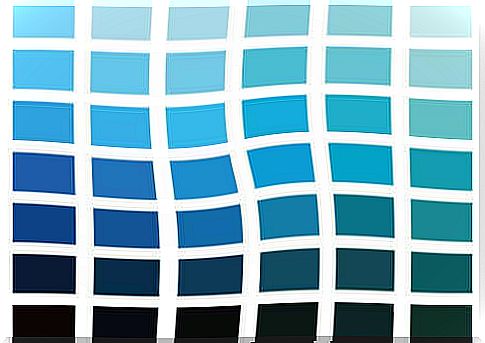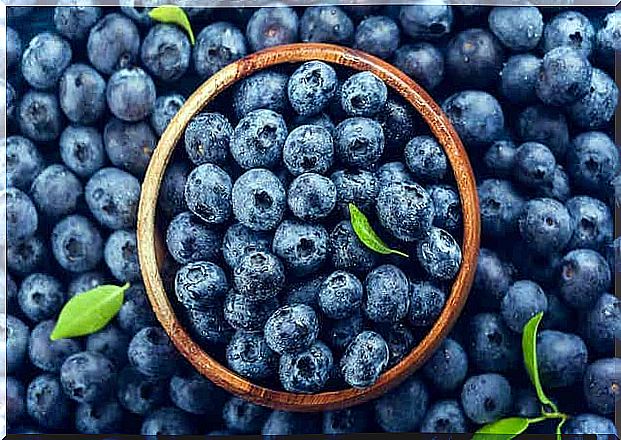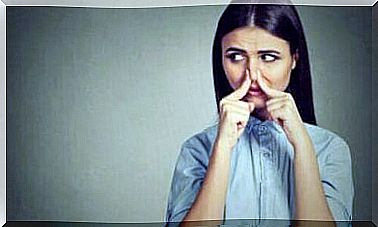What Does The Color Blue Mean In Psychology?

Did you know that colors affect our mental and emotional state? It is true that each tone can produce many different effects, even contradictory ones. It’s all about context. In this article we discuss the different states that the color blue can evoke in us according to psychology.
Sociologist and psychologist Eva Heller, a specialist in color psychology, found that blue is usually the favorite color of many people. It’s hard to find someone who doesn’t like it!
That’s because, subconsciously, we tend to associate this color with a variety of positive qualities, such as trust, loyalty, sympathy, calmness, and rationality. Let’s take a closer look at this.
What does the color blue mean in psychology?
The color blue is often associated with water (especially the sea) and the sky. The associations with these elements give it a symbolism of tranquility and peace, especially when the shades are light, such as light blue.
It is also one of the colors most associated with the ability to control. Tolerance, introspection and understanding are traits it also transmits. In turn, it is linked to, among other things:
- To trust
- take care of others
- Credibility
- Power
- seriousness
- Creativity
- Physical energy
- cordiality
- Technological development
In light of all these positive feelings, many collective entities have borrowed the color blue to convey them. For example, we can mention the following here:
- The uniforms of security forces evoke confidence and seriousness.
- In political campaigns it inspires authority, credibility and peace.
- Banks, insurance and pharmaceutical companies try to convey security, trust and care.
- In marketing, it is meant to influence consumer purchases.
Experts have found that the color blue is ideal for promoting diet foods or decorating the kitchen, as it helps us to feel less hungry and thus eat less. This is because this color is not usually found in foods.
Finally, it is also associated with negative qualities such as sadness, melancholy and nostalgia. This may be due to the resistance to warm colors.
According to color psychology, blue is the coldest color and based on our experiences with low temperatures. The skin takes on a bluish tint under these conditions and ice and snow are associated with these shades.
Meaning of the different shades of blue

According to Eva Heller, there are 111 shades of blue. However, only 23 varieties of this color carry specific psychological perceptions. Here are the most common shades and the meaning commonly associated with them.
Light blue or sky blue
This tone is associated with feelings of silence, tranquility, protection and generosity. Lighter shades are usually associated with remembrance, introspection, and self-communication.
The color is therefore ideal for promoting states of relaxation and concentration. It is often recommended in bedrooms to help fight insomnia.
Dark blue
Dark blue is associated with truth, moderation, stability, order and seriousness. It is very common to use this color in police or security uniforms.
navy blue
This shade is usually associated with fidelity, devotion, infinity, that which is sacred and royalty. This may be because the night sky, where the gods dwell, is perceived as navy blue. It was also widely used by pharaohs and virgins. At the same time, it is also associated with elegance and economic power.
In the past it was very representative of high society. That was because it was difficult to manufacture, which made it expensive. Today it is a color that is widely used to make elegant suits. Navy blue also evokes feelings of calm and relaxation as it evokes the depths of the sea.
turquoise
This is a color that is in between blue and green, so it conveys the qualities of both. For example, rest and grow. We also associate it with mental clarity, creativity, introspection, balance and emotional control. So if you want to undertake a creative project, you can decorate rooms with this color. This will allow inspiration and creativity to flow more easily.
The color blue in other cultures

It is important to keep in mind that the meaning of the color blue can vary depending on the culture. So remember, the effect it has on us depends a lot on context.
For example, the Chinese sometimes frown at the color blue, as they associate it with pornography. That’s because they often refer to those movies there as “blue movies.” In Belgium, blue is often a color for girls. And in South Korea, they associate the color with death, making it the color of mourning for Koreans.









